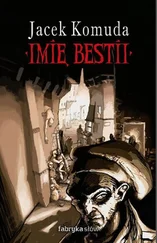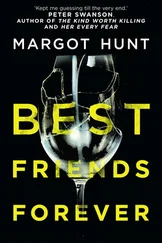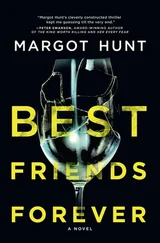1 ...6 7 8 10 11 12 ...17 ‘Tell you what. This guy at the hotel gave me an address in Guanabo, claims there are fine chicks there. Let’s go get the car and drive over. If I don’t find a broad I really like, we’ll come back to the first place you took me to and I’ll settle for the brunette.’
Pablo didn’t like the idea, but he had decided to humour John all the way. He found it strange that after exiting the tunnel under Havana Bay, John didn’t ask for directions. Well, maybe he had been to the beach on his own, the Cuban figured. The tourist remained silent, eyes on the road, observing the 100-kilometre speed limit, air conditioner on, windows closed.
The Cuban didn’t feel like making small talk either. He had been very upbeat all day at the office, overjoyed at the prospect of making in one night what many Cubans don’t earn in a year of hard work. He had even sniffed a line at Tongolele’s and bought four more fixes in premature celebration. But now he was feeling uptight. Pablo admitted to himself that the motherfucker was hard to please; he could kiss one of the two Cs good-bye.
What if the bastard found a woman to his taste in Guanabo? Then he wouldn’t make a penny, since it wouldn’t be as a result of his procuring. But should the asshole return to Angelito’s for the brunette he had eyed so hungrily, Pablo would make a hundred for guiding the sleazeball to the girl he finally picked. He had to concoct a story the sucker might swallow. Maybe if he said that AIDS had struck down hundreds of people in Guanabo? He lit a cigarette and mulled over alternatives for most of the twenty-minute ride.
It was quarter past twelve when John took a left at the crossing of Via Blanca and 462nd, coasted down to the town’s main thoroughfare, then glided along until he confidently turned off the boulevard and, heading inland, followed a street for three blocks before taking a left, killing the lights, and pulling over.
‘This is it?’ Pablo asked in a tone brimming with curiosity, struck by the strangeness of his surroundings. To their left, behind a barbed-wire fence, the back of a huge, one-storey warehouse stretched all the way along the block. On the other side of the street several modest private houses had the wooden slats of their front windows wide open. It could be assumed the residents were most likely in bed, electric fans turning at top speed to keep mosquitoes away and fight the heat, lights off. Somewhere close a dog barked unenthusiastically. Streetlight was provided by a low-wattage bulb on an electricity pole fifty yards away.
‘Yeah, let’s go.’
Doors were opened and shut. As John was locking the car, Pablo reached the sidewalk and stood by his side.
‘Listen, John, I don’t want to worry you,’ Pablo began, sounding concerned. ‘But last year, many people here in Guanabo have…’
Pablo didn’t know what happened to him. Out of the corner of his eye he saw a swift, unexpected movement and started turning his head, but an instant after John’s fist brutally hit his temple all his systems collapsed and he keeled over.
The tall overweight man looked around as if he had all the time in the world. The dog kept barking. Lifting the limp body by the armpits, John manoeuvred Pablo into a sitting position and, crouching behind him, grasped the bald man’s chin with his right hand and the back of his head with his left, then in one swift motion he yanked up and around with all his might. Cervical vertebrae snapped.
Next, kneeling by the body, John savagely bit twice into the left side of his victim’s neck. He spat in disgust several times before producing a plain envelope containing four fifty-dollar bills folded in half. With the edge of his fingernails he removed the money and tucked it into a pocket of the dead man’s pants. Finally, he freed Pablo of his cheap watch, his wallet, and his shoes.
Panting, with beads of sweat on his forehead, he stood up, dusted his knees, and scrutinized both ends of the block. The dog kept barking, insistently now, goaded by death. John unlocked the driver’s door, slid behind the wheel, dropped Pablo’s personal possessions on the passenger seat and turned the ignition. The car crept away for two blocks, its lights off, before he took a left and returned to the town’s main street. He felt the repugnance of one who has just squashed a big bug under the sole of a shoe.
Once he’d dumped the Cuban’s belongings into a sewer in Old Havana, John considered whether he could go back to Angelito’s and screw the sexy whore. But after close to a minute grabbing the wheel with both hands and pursing his lips, he shook his head, sighed resignedly, and drove to the Hotel Nacional.
As is often the case, the crime scene had been contaminated by the time the Guanabo police, at the crack of dawn, answered a phone call made nine minutes earlier. Nobody had touched the corpse, but the truck driver who found it on his way to work, and the relatives and neighbours to whom he excitedly announced his discovery, had got near enough to raise doubts on any footprint, fibre, or hair that could be cast or retrieved. Tyre prints on the grit alongside the kerb had also been trampled.
The Guanabo police are not equipped to deal with a homicide and rarely see one, so they confined their participation to cordoning off the area, questioning people, stationing guards, then radioing the DTI, * the LCC ** and the IML, + all three of which have headquarters in the Cuban capital.
At 7.11 a.m., with dawn becoming early morning and the tide starting to turn, three LCC specialists and Captain Félix Trujillo from the DTI arrived in a Lada station wagon. They listened in silence to the lieutenant waiting for them. No neighbour had heard or seen anything unusual before or after going to bed, curious onlookers had ruined the corpse’s immediate surroundings, nobody there knew the dead man.
IML experts carry out the on-site inspection of the body, take it to the morgue, gather whatever evidence is on it, perform the autopsy, and assist in the identification process of unknown persons, so the LCC people just eyed the corpse from a distance before looking around for impressions, taking photographs, and measuring distances.
The white Mercedes Benz meat wagon reached its destination at 7.49. Three men and a woman in white smocks, olive-green trousers, and lace-up black boots got out, shook hands with the cops, exchanged a few words. Captain Trujillo seemed especially delighted to see Dr Bárbara Valverde, an attractive, thirty-three-year-old, dark-skinned black pathologist. She learned from him the few known facts, then pulled out an aluminium scene case from the back of the van, opened it, passed around latex gloves and plasticized paper booties to her assistants, slipped a pair of gloves on, donned a surgical mask and booties. She closed and lifted the scene case, approached the corpse, swatted away the flies, put the case down, and crouched by it. The body lay prone, face supported on the left cheek, both arms at the sides, legs slightly bent to the right. Down the street, senior citizens gaping behind the police line frowned and murmured in confusion. A woman examining a dead man? She a necrophiliac or what? Young and middle-aged voyeurs pooh-poohed them into silence.
The first thing the pathologist noticed was the lump at the base of the neck. She ran her index and middle fingers over it, feeling the dislocated vertebrae. Then she spotted the laceration on the right temple and her fingers detected comminuted fractures of the temporal bone. There were low-velocity stains of blood on the sidewalk, under the left corner of the mouth, probably coming from split lips and teeth loosened when the head hit the cement.
‘Let’s turn him over,’ Dr Valverde said.
Rigor mortis was almost complete. She held the head in her hands while her assistants turned the body. Bills folded in half fell from a pants pocket. One of the assistants whistled. The pathologist reopened the scene case and reached for a pair of tweezers, which she used to pick up the bills and drop them into a transparent plastic evidence bag.
Читать дальше












